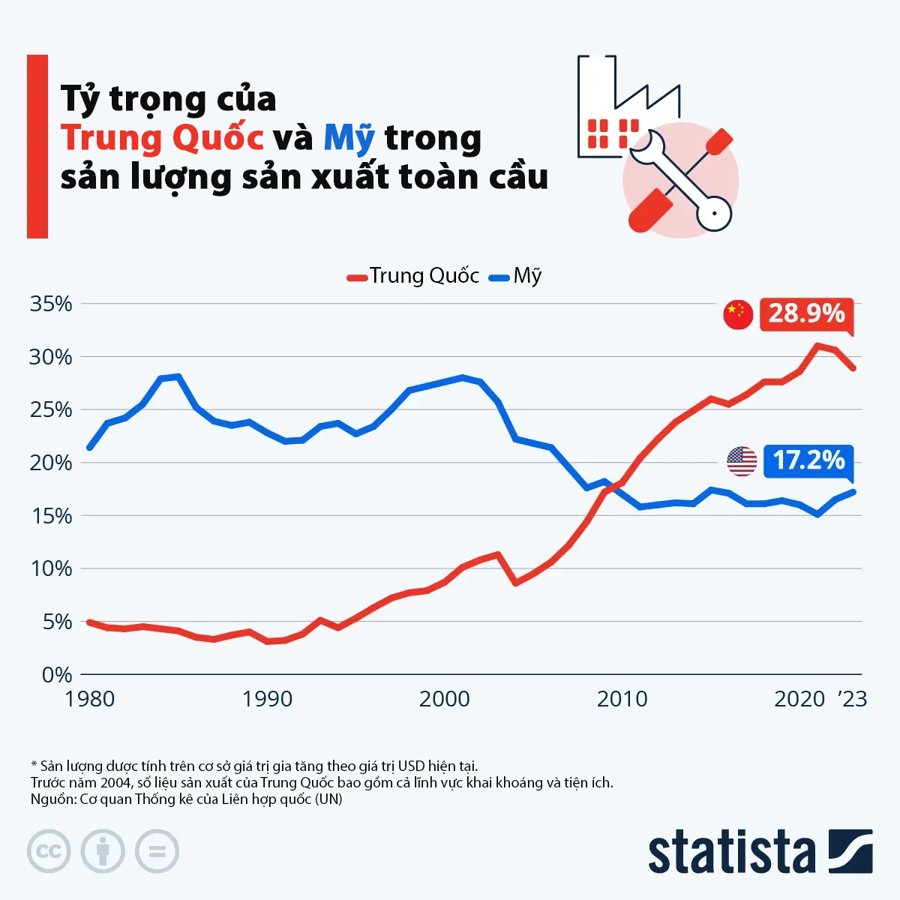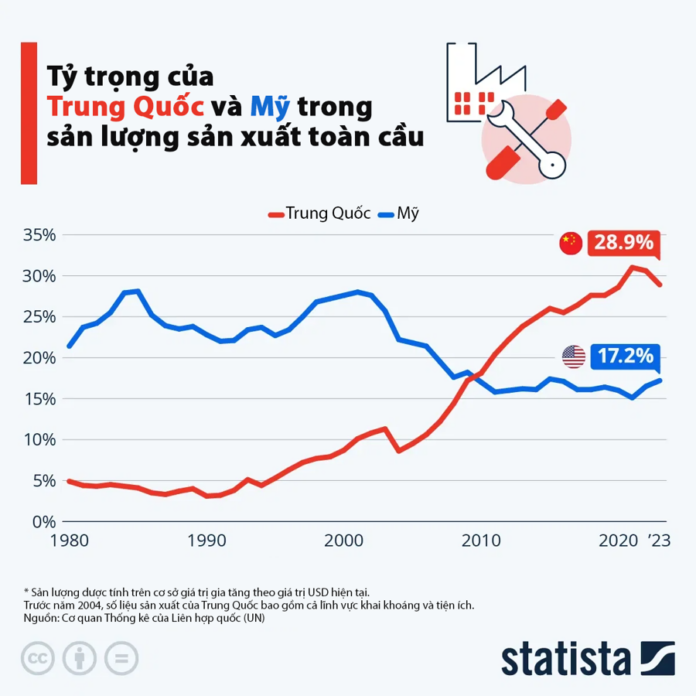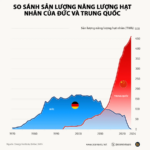For years, the world has perceived China as the largest manufacturing hub globally. However, this isn’t always the case. In fact, before 2009, the US still held the largest share of global manufacturing output.

As of 1980, China’s manufacturing output stood at nearly $134 billion. This figure surged to approximately $4.8 trillion in 2023, representing a staggering increase of nearly 3,500%. During this four-decade period, China’s share of global manufacturing rose from 5% to almost 30%, while the US’s share declined from 21% to 17%.
When China joined the World Trade Organization (WTO) in 2001, its share of global manufacturing was only around 7%, compared to the US’s 28%. WTO membership opened up China’s economy to the world, rapidly changing its status and transforming the country into the “world’s factory.”
The US Retaliates with a 46% Tariff: What Does This Mean for Vietnam’s Inflation, Exchange Rates, Interest Rates, and Banking Sector?
I predict that inflation will remain within the government’s target and that it will be manageable. This provides a solid foundation and opportunity for the State Bank to harmonize its control tools.
The Nuclear Power Paradox: Contrasting Paths for China and Germany
The infographic below compares the nuclear energy trajectories of China and Germany, Asia’s and Europe’s largest economies.




















